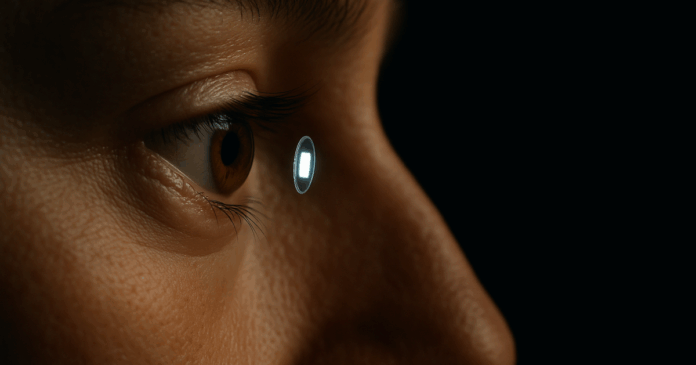In what could be an industry shifting breakthrough, researchers have created a screen about the size of a human pupil with a resolution that breaks through the limits of pixels. The invention could radically change virtual reality and other applications.
While most video screens such as those on our phones, TVs, and stadium jumbotrons seem to improve in resolution on a monthly basis, there has been an issue in improving the resolution of the tiny screens required in virtual reality apps. The problem is that as the screen moves closer to the human eye, the pixels that comprise it need to get smaller and smaller. Yet, if pixels get too small, their function starts to degrade and the image suffers. On a micro-LED screen, for example, pixels can’t get much smaller than one micrometer wide before losing their ability to render a clear, crisp image.
So instead of relying on pixels, researchers from Chalmers University of Technology, the University of Gothenburg and Uppsala University in Sweden turned to a different technique. They created what they’ve termed “metapixels” out of tungsten oxide, a material that can switch from being an insulator to a metal based on its electrical state. The metapixels reflect light differently based on their size and how they’re arranged, and can be manipulated by an electrical current. In a way, they function much like the pigments in bird’s feathers, which can take on different colors based on how the light is hitting them.
The fact that metapixels don’t need a light source eliminates the problems that video pixels take on when they get too small such as color bleeding and issues with uniformity.
Indistinguishable
The result is that the team was able to create a screen that’s about the size of a human pupil packed with pixels measuring about 560 nanometers wide. The screen, which has been dubbed retinal e-paper, has a resolution beyond 25,000 pixels per inch. “This breakthrough paves the way for the creation of virtual worlds that are visually indistinguishable from reality,” says a Chalmers news release about the breakthrough.
“This means that each pixel roughly corresponds to a single photoreceptor in the eye, i.e. the nerve cells in the retina that convert light into biological signals,” adds Andreas Dahlin, Professor at the Department of Chemistry and Chemical Engineering at Chalmers. “Humans cannot perceive a higher resolution than this.”
To demonstrate the efficacy of the tiny screen, the researchers reproduced The Kiss, a famous artwork painted by Gustav Klimt. The image was shown in perfect resolution on the screen, which at approximately 1.4 x 1.9 mm was 1/4000th that of a standard smartphone.
“The technology that we have developed can provide new ways to interact with information and the world around us,” says Uppsala’s Kunli Xiong, who conceived the project and is the lead author of the study. “It could expand creative possibilities, improve remote collaboration, and even accelerate scientific research.”
The researchers are now working on refining their invention further, but they believe it could have a dramatic impact on the world of tiny optics.
“This is a major step forward in the development of screens that can be shrunk to miniature size while improving quality and reducing energy consumption,” says Giovanni Volpe, from the University of Gothenburg. “The technology needs to be fine-tuned further, but we believe that retina e-paper will play a major role in its field and will eventually have an impact on us all.”
The research has been published in the journal Nature.
Source: Chalmers


